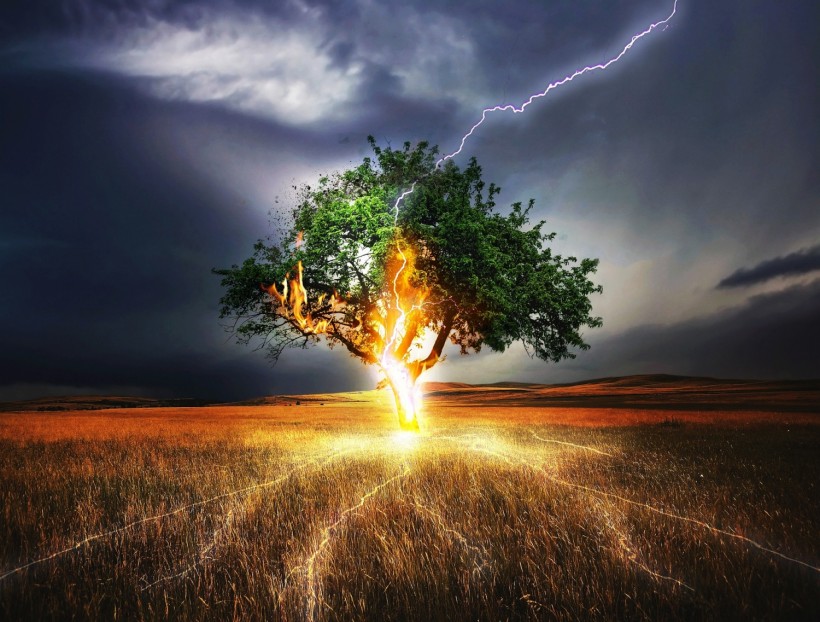According to recent research, plant-based sparks may be affecting the local air quality in unrecognized ways. It is uncertain, however, whether these atmospheric minishocks will have beneficial or detrimental effects.

Lightning Strike
Plant Coronas On Trees
Researchers investigated the coronas emitted by eight plant species under various situations. They replicated the electrical fields from thunderstorms in a lab for the study published in the Journal of Geophysical Research: Atmospheres.
According to the findings, every corona produced a lot of radicals. These radicals are molecules with unpaired electrons that are very reactive with other substances and can dramatically change the local air quality.
Although little is known about how broad these discharges are, lead study author Jena Jenkins stated that they believe coronas produced on trees during thunderstorms could significantly impact the surrounding air.
Radicals Released by Plant Coronas
Plant coronas release two radicals: hydroxyl (OH) and hydroperoxyl (HO2). These two negatively charged radicals create new molecules by oxidizing or stealing electrons from various chemical compounds. The researchers paid particular attention to the levels of hydroxyl radicals because of their greater impact on air quality.
William Brune, a meteorologist at Penn State University and co-author of the paper, claims that the hydroxyl radical contributes to the overall atmospheric oxidation of a number of pollutants.
According to Brune, when hydroxyl radicals interact with greenhouse gases like methane, they can remove toxic substances from the atmosphere and thwart climate change. Despite having an important role in the high atmosphere, ozone can be dangerous to individuals if it is inhaled.
Related Studies on Plant Coronas
According to Live Science, researchers have already shown the connection between thunderstorms and hydroxyl radicals in the past. A study team under the direction of Brune discovered in 2021 that lightning was a significant source of hydroxyl radicals in the atmosphere.
The team's theory that thunderstorms may be directly responsible for up to one-sixth of the hydroxyl radicals in the atmosphere was presented in a study published in the journal Science.
In September, a follow-up study by Brune's team was published in the journal Earth, Atmospheric and Planetary Sciences. It revealed that plant coronas have a lower concentration of hydroxyl radicals than metallic objects like telephone poles and transmission towers.
ALSO READ: Ants Do Not Eat Leaves: They Use Them To Grow Fungus Garden For Food And Space
Plant Coronas Impact on Air Quality
Compared to those created by lightning directly, plant and man-made coronas release substantially fewer radicals. Jenkins stated that even though the plant corona's charge was smaller than the sparks and lightning they had previously seen, they still observed enormous quantities of this hydroxy radicals being produced. She said that considering the huge number of trees in lightning-prone areas, plant-produced coronas might represent a significantly understudied source of radicals with a potentially unanticipated effect on air quality.
Jenkins estimates that there are roughly two trillion trees in regions of the planet where thunderstorms are most likely to develop and that there are 1,800 thunderstorms active at any given time. Experts wish to continue studying these coronas in greater detail to understand their local and global influence fully.
RELATED ARTICLE: Super-absorbent fake leaves suck carbon dioxide from the environment
Check out more news and information on Environment in Science Times.




![Earth's Quasi-Moon Kamo‘oalewa Could Originate From Lunar Surface Not Asteroid Belt [Study]](https://1721181113.rsc.cdn77.org/data/thumbs/full/53275/89/56/50/40/earths-quasi-moon-kamo-oalewa-could-originate-from-lunar-surface-not-asteroid-belt-study.png)









